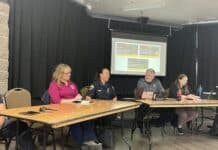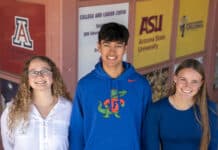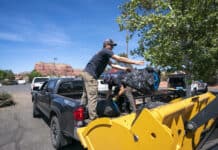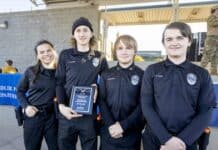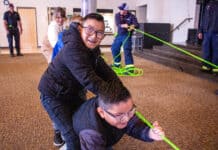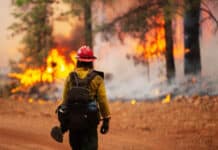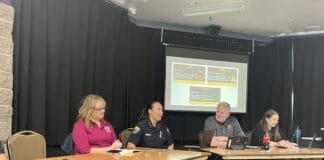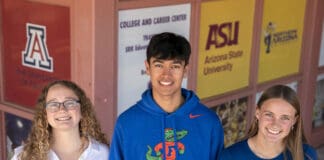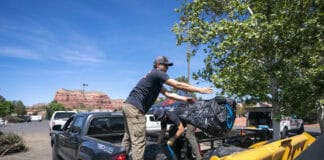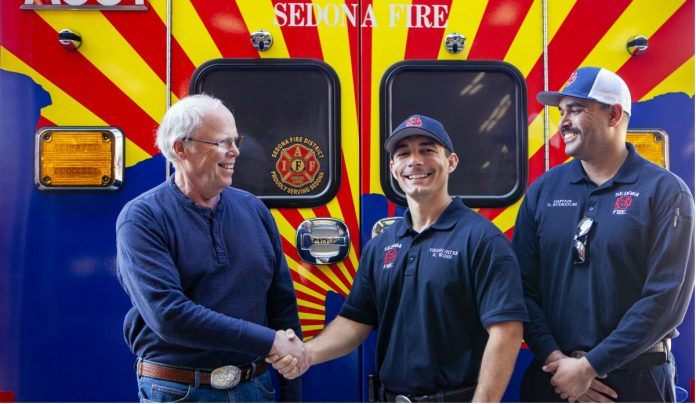
Last last month, a pickleball player collapsed on court in the Village of Oak Creek without a detectable pulse.
As it happened, Robert Wright was sharing the courts with a retired radiologist, a nurse practitioner and a visiting chiropractor, who together performed CPR on Wright until he regained consciousness and EMTs from the Sedona Fire District arrived to begin treatment and transport him to the Verde Valley Medical Center.
Wright, 74, attributes the circumstances — his heart having an electrical event at that particular moment surrounded by those particular people — to a higher power.
“That particular group hasn’t been together since then. It’s just fortuitous that they were there playing with me that day,” he said. “I had a feeling that this happened this way for a reason. I don’t know what the reason was; it’s beyond my pay grade. But I sure have a strong feeling that there was a reason for this to happen.”
From the perspective of Josh Maxwell, an engineer paramedic who was on the crew that responded to the 911 call from the courts, Wright’s fellow pickleballers checked all of the boxes to maximize Wright’s chances of surviving his cardiac incident, known as a third degree block, a condition in which nerve impulses in the upper chambers of the heart stop traveling down to the lower chambers to coordinate beating.
“Early CPR, early notification, and hooking someone up to an AED; those are the first three steps for saving someone’s life,” said Maxwell, who is also the CPR training coordinator for SFD.
SFD personnel arrived very quickly after receiving the alarm — Capt. David Rodriguez, a paramedic who was also on the call, believes the crew arrived at the Village of Oakcreek Association tennis courts in less than two minutes — but Wright, coincidently a retired paramedic who helped established a CPR training program at the Palatine Fire Department in Illinois, credits the chest compressions he received in the short interval for his quick recovery.
“There’s a gap between when the heart isn’t pumping enough blood to the brain where a lot of damage can occur in the brain, the heart itself and the vital organs,” he said. “That gap is life or death.”
Wright was released from VVMC the day after his incident, after receiving a permanent pacemaker in the center’s cardiac catheterization lab. He wowed his fellow pickleballers by visiting the courts — but not yet playing — later the same week. Wright believes the blood that circulated to his organs while receiving CPR made this possible.
Dr. Edgar Cordivin, the retired radiologist, had attended a CPR class at his church just six months earlier, and he performed the chest compressions on Wright after he lost consciousness. Christine Sturgeon, the nurse practitioner who assisted with the CPR, along with David Lawson, described Cordivin’s compressions that day as “deep” and “effective.”
Wright says his chest is sore following the incident, “but it’s the kind of sore that reminds me I’m alive.”
Wright is serious in his belief about the providence of the circumstances, and he thinks that part of the plan may be to help more people in the community learn CPR. He has been communicating with the VOCA board of directors and says there is interest among the board in organizing classes for VOCA residents in the aftermath of his crisis.
Maxwell says that Sedona Fire has seen the value in community members learning CPR and that the district is eager to collaborate with the community on organizing CPR trainings. The District also hosts regularly monthly CPR classes.
According to Maxwell, the Sedona Fire District responds to about 25 to 30 full cardiac arrests a year and sees a survival rate [from crisis to hospital] of 30% to 40%.
“Before we initiated some of the community programs [in 2010] with the AED’s, the hands only CPR, and the CCR [cardio-cerebral resuscitation], which is continuous compressions, our average was about 10%, so it’s been very a marked improvement.”
In addition to Rodriguez and Maxwell, the other members of the responding Sedona Fire District Station 3 crew in the VOC included Richard Winn, firefighter paramedic; Gary Davis, firefighter paramedic; Jose Diaz, firefighter EMT; Matt Fisher, engineer EMT; and Marcus Koistinen, firefighter EMT.
Maxwell says that local residents interested in learning CPR or other life-saving techniques like CCR can email Eric Walter, their CPR contact, at CPRinfo@sedonafire.org. He also suggested that people who are already trained in a life saving technique download an app, PulsePoint, which notifies them if someone in their vicinity is having a cardiac emergency and needs assistance.
Wright reflected on his intense desire to play pickleball the morning that he collapsed, and the number of people with the right training gathered together on the court.
“How perfect a situation is that,” he said. “Maybe I’m here to continue to promote what I’ve done all my life [as a paramedic].”


